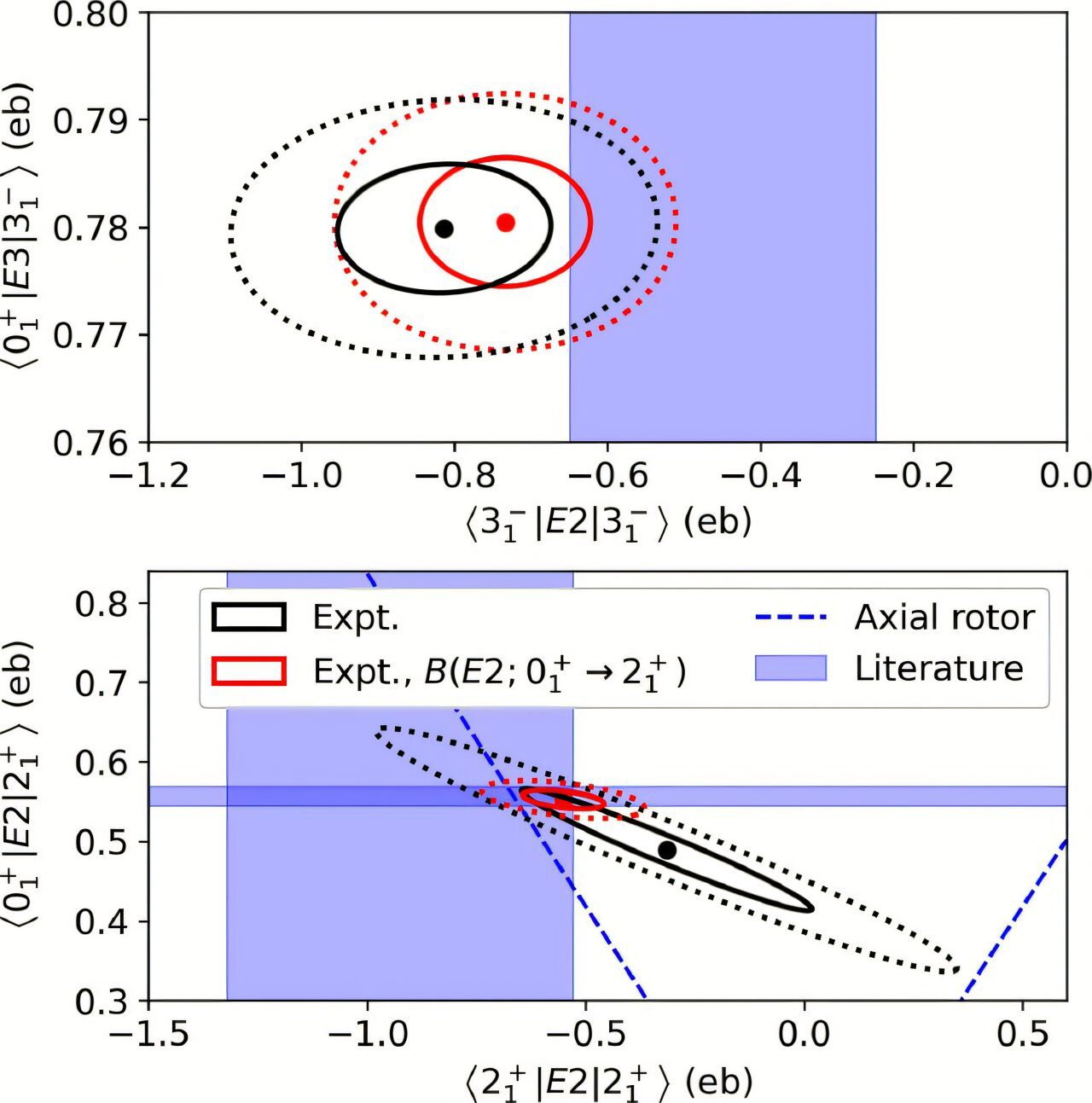

A groundbreaking collaboration among global researchers, led by the Nuclear Physics Group at the University of Surrey, has challenged the long-held notion that the atomic nucleus of lead-208 (²⁰⁸Pb) is perfectly spherical. This revelation questions core assumptions regarding nuclear structure and could significantly enhance our comprehension of how the universe’s heaviest elements are produced.
Known for its remarkable stability as a “doubly magic” nucleus, lead-208 is the heaviest isotope confirmed to date. However, a recent study published in Physical Review Letters utilized cutting-edge experimental techniques to investigate its shape, revealing that the nucleus is not a perfect sphere but rather slightly elongated, resembling a rugby ball (or prolate spheroid).
According to Dr. Jack Henderson, the principal investigator from the University of Surrey’s School of Mathematics and Physics, “By synthesizing four distinct measurements with the world’s most advanced experimental apparatus tailored for such studies, we were able to make this significant observation. The results were unexpected, providing clear evidence that lead-208 does not conform to conventional assumptions of being spherical. This outcome directly contradicts prior theoretical models, laying the groundwork for further inquiry.”
Utilizing the state-of-the-art GRETINA gamma-ray spectrometer at Argonne National Laboratory in Illinois, USA, researchers bombarded lead atoms with high-energy particle beams traveling at one-tenth the speed of light—akin to completing an orbit around the Earth in just one second. These interactions generated unique gamma-ray signatures indicative of the properties of excited quantum states within lead-208 nuclei. Essentially, this excitement was integral in determining the nucleus’s shape.
Theoretical physicists, including those from the Surrey Nuclear Theory Group, are now revisiting existing models that define atomic nuclei, as the findings suggest that nuclear structure may be considerably more intricate than previously understood.
Professor Paul Stevenson, principal theoretical researcher on the team from the University of Surrey, remarked, “These highly sensitive investigations have illuminated aspects of nuclear structure we had assumed were well-known, presenting a new challenge in grasping the underlying reasons. One hypothesis is that the vibrations of the lead-208 nucleus, observed during excitation, are more erratic than previously thought. We are refining our theoretical approaches to determine the validity of these statements.”
This study, involving a collaboration of leading experts from top nuclear physics institutes across Europe and North America, confronts fundamental tenets of nuclear physics and opens up new research opportunities in areas such as nuclear stability, astrophysics, and quantum mechanics.
Further Information:
J. Henderson et al, Deformation and Collectivity in Doubly Magic 208Pb, Physical Review Letters (2025). DOI: 10.1103/PhysRevLett.134.062502
Provided by
University of Surrey
Citation:
Unexpected structure of the lead-208 nucleus prompts re-evaluation of atomic nuclei models (2025, February 22)
retrieved 22 February 2025 from https://phys.org/news/2025-02-unexpected-nucleus-prompts-reevaluation-atomic.html
This document is subject to copyright. Except for fair use for personal study or research, no part may be reproduced without written consent. The content is intended for informational purposes only.









